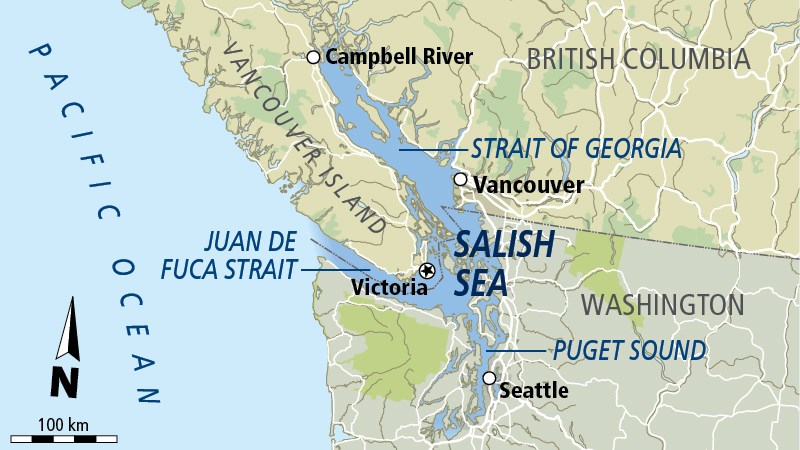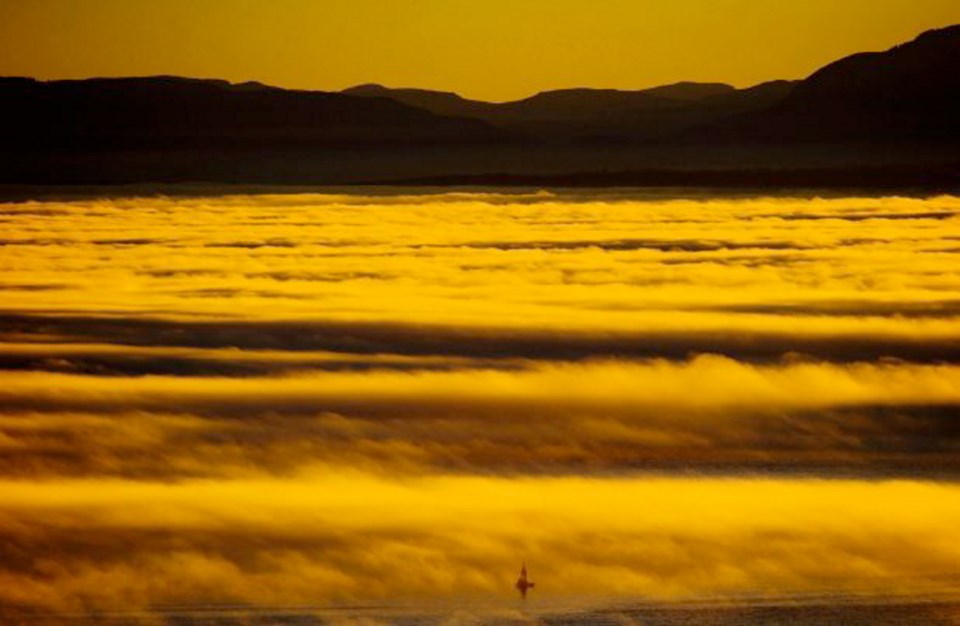The number of species at risk has doubled over the past decade in the Salish Sea, generating calls for a special international body to co-ordinate research and conservation issues in the 17,000-square-kilometre area that includes the Strait of Juan de Fuca, the Strait of Georgia and Puget Sound.
Joe Gaydos, a wildlife veterinarian with the SeaDoc Society based in the San Juan Islands, said the latest scientific snapshot of species at risk in the Salish Sea should be a wake-up call to Canada and the U. S. to better co-ordinate their efforts. SeaDoc is a program of the University of California Davis Wildlife Health Center.
He noted as an example that the International Joint Commission already oversees trans-boundary waterways such as the Skagit River, Columbia River, and the Great Lakes.
"It's time to set something up," Gaydos asserted in an interview.
"We need to be looking on both sides to do a better job."
From 2011 to 2013, five new species in decline were added to the list: American shad, North Pacific spiny dogfish, Pacific Ocean perch, buff-breasted sandpiper, and Baird's beaked whale. Another 10 species were added simply because it was determined their range included the Salish Sea.
A total of 119 species are considered at risk in the Salish Sea as of November 2013, up from 60 species when scientists produced their first report on the issue in 2002, finds a SeaDoc report released Thursday at a Salish Sea Ecosystem Conference in Seattle.
Currently, 35 per cent of mammal species, 32 per cent of bird species, 17 per cent of fish species, 100 per cent of reptile species, and less than one per cent of larger invertebrate species are listed as at risk by one or more of four jurisdictions - Canada, U.S., B.C. or Washington state.
Canada listed 61 per cent of the 119 species (including sub-species, distinct populations, and candidates for listing), B.C. 58 per cent, Washington 44 per cent and the U.S. government 22 per cent.
"I think it's a good sign that Canada and B. C. are ahead of the game on listing," said Gaydos. "Most of these species are seeing a decline on both sides of the border."
On the other hand, when a species is listed under the U. S. Endangered Species Act it receives stronger protection than under Canada's Species At Risk Act, he said.
The report suggested the Salish Sea is suffering from "ecosystem decay" and that the region should be considered an "ecosystem of concern." More funding is needed to study the problem and reverse the "insidious loss" of species, it concluded.
Since 2002, "every jurisdiction has underestimated the total number of species of concern within the Salish Sea," the report continued.
"Combining all listed species within the ecosystem is needed to portray a comprehensive view of the actual species of concern."
The Salish Sea is an officially recognized term that describes the shared waters of Strait of Georgia, Juan de Fuca Strait and Puget Sound.

Protection measures can vary widely on both sides of the border. On the U.S. side, whale watchers must keep 200 yards from endangered resident killer whales, and non-profit Soundwatch is on the water in summer to educate boaters. On the Canadian side, federal law prohibits disturbance of the whales, and boaters are urged to maintain a distance of 100 metres. Federal funding for Straitwatch has been axed, leaving no similar watchdog in Canadian waters.
The listing and delisting of species is an ongoing process, as scientific information suggests the fate of a species is worsening or improving. In some cases, an animal may be added to the list or its severity of threat increased, say, from threatened to endangered.



